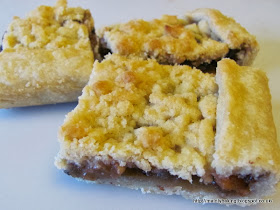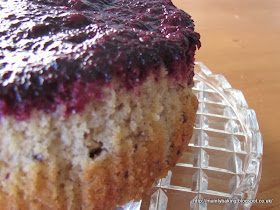Disclaimer This post is written
in association with Argos
but the views and opinions expressed are my own.
 |
| The Kenwood Chef Classic |
Although I’m a cake baker with many years of experience, and
at times have had a pretty prolific output, I’ve never used anything more
powerful than a hand-held electric mixer to make things with. So it was with some
trepidation, as well as excitement, that I started to unpack the huge box
containing the
Kenwood Chef Classic (KM330) from Argos.
The sturdy box, along with the inner polystyrene padding which protected
the machine, ensured that everything arrived from the courier undamaged.
The Kenwood Chef Classic, which has an 800W motor, comes
with a plastic bowl, K-beater, balloon whisk and dough hook, as well as a
splash-guard, and there are output sockets on the machine for various
attachments, including blenders and food processors, which can be bought
separately. There is a very basic manual, but there is nothing complicated
about using the machine, so I think the instructions are adequate. One of the
most important things to know when using this type of machine is the maximum
amounts of ingredients that can be used, and this is covered in the instruction
manual. There are enough recipes in the included recipe book to give a guide to
the capabilities of the Chef as well as an idea as to how to adapt your own
favourite recipes for use with the mixer, but many of the recipes are designed
to use the extra optional attachments, so aren’t much good for the basic model
Chef Classic.
 |
| The splashguard, open for additional ingredients |
The food mixer arrived on the day I was planning to make a
special dessert for my daughter’s birthday dinner, so I was able to use it
straight away to make short crust pastry. I used 500g of flour, roughly 2/3 of the
maximum capacity of the mixer, plus 250g butter cut into small cubes and water
to mix. I was very impressed at how well the butter was cut into the flour; the
shape of the K-beater doesn’t look as if it would be efficient at this stage of
pastry making. (Before getting the food mixer, I had no idea it could actually
be used for pastry!) The machine struggled a little as the water was added and
the flour and butter mixture formed a ball of dough, but I realised later that
I should have been using a lower speed.
I couldn’t detect any difference between this pastry and my
usual hand-made pastry, and it was a lot easier on my hands, which often suffer
from arthritic pains after too much
repetitive movement, such as rubbing fat into flour. I certainly wouldn’t have
made such a large amount of pastry in one go, by hand, so the machine will be a
definite bonus at busy times of the year.
I also used the Kenwood chef to whisk double cream
successfully; after reading through some of the recipes I was surprised again
to see that it could whisk as little as 150mls. Whisking the cream didn’t take
long but I was a little apprehensive about missing the optimum point and over-whipping,
so there was a lot of stopping and starting. More experience will make this
easier, I’m sure.
 |
| The dough hook (left) and balloon whisk (right) |
The next thing I made was
a classic all-in-one sponge cake mixture, as cake making is the area where I think the Kenwood chef will be most
useful to me. I used three eggs and 150g of each of SR flour, fat and sugar, plus some flavouring. I
needed to stop once to scrape the mixture down from the sides of the bowl, to
make sure everything was evenly incorporated, but this happens with a hand-held
mixer too. The cake was as light as expected, so I can mark down another
success.
Finally, I decided that I really should use the dough hook
to get a full idea of the Kenwood Chef’s performance, even though I don’t often
have much success with yeast dough. I followed the instructions in the recipe
book to make a batch of enriched dough for
Chelsea buns, but instead of making 12 large
buns, I cut the filled and rolled dough into 16 smaller buns. The buns had a
really good texture, and using the food mixer involved much less work on my
part as all the mixing and kneading was done by the machine, and I could even
put the bowl of dough into my Neff oven, which has a dough proving setting.
Overall I’ve been very satisfied with the results obtained
with the Kenwood Chef Classic KM330,
although there was one little niggle about the construction which would have
been inexpensive to improve. Initially, the machine tended to vibrate and move
about on the work surface when in use, particularly when the motor struggled or
was unbalanced by a ball of dough. There are points on the base where rubber
feet could easily have been fitted, and when I fitted stick-on feet at these
points all movement stopped and the machine seemed much more stable! The motor
also seems very noisy, although that might just be my perception, as I don’t
have anything similar to judge it against.
 |
| The K-beater, for general mixing |
As I said earlier, the various attachments are easy to fit
and remove. The splash guard can stay in place while the bowl is removed, or
the tools changed, and the tools themselves are easy to clean, even if they
have been left standing a while so that any remains of cake batter have dried
on – a real bonus with my tendency to avoid washing up! The tools and bowl can
also be cleaned in a dishwasher.
One point which I have come to realise is that I need to
find room somewhere in the kitchen to have the mixer out all the time. It’s
quite heavy to move about, so unless it’s on show and ready to use, the
temptation will always be to use either the hand-held mixer or even a bowl and
spoon method for cakes, which forms the largest part of my baking repertoire.
It would have been useful if the standard kit included some sort of cover,
rather than having to buy one as an accessory, as the mixer is obviously going
to need one if it is left out in the greasy, steamy atmosphere of the kitchen.
A cover is not really expensive to buy separately but could easily have been
included without raising the price or lowering the profit too much.
Having initially been reluctant to believe a stand food
mixer was necessary, I’m now convinced that the Kenwood Chef Classic KM330 will
save me both time and effort. I’m not expecting a great improvement in the
quality of my baking, except perhaps with yeast dough, but I do think that the major part of the preparation
will be quicker and easier.


















































